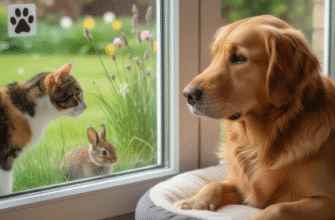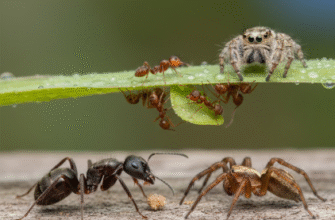Bringing a pet into a home with children can be a truly magical experience. Furry, feathered, or scaled companions offer friendship, teach valuable life lessons, and fill a house with extra joy. However, the dream of perfect harmony between child and pet doesn’t just happen; it requires thoughtful consideration and careful selection. Choosing the right pet isn’t just about what looks cute in the pet store window; it’s about finding an animal whose needs and temperament align with your family’s lifestyle, resources, and the child’s developmental stage.
Why Welcome a Pet? More Than Just Fun
The benefits of pet ownership for children are widely acknowledged. Interacting with animals can foster empathy and compassion as kids learn to recognise and respond to another being’s needs. Caring for a pet, even with simple tasks, instills a sense of responsibility and routine. From feeding a hamster to helping walk a dog, these actions teach commitment. Pets are also fantastic, non-judgmental companions, always ready with a listening ear (or a comforting purr). Plus, let’s be honest, they bring a huge amount of fun and laughter into daily life, encouraging play and sometimes even more outdoor activity.
Before You Leap: Essential Family Considerations
Before visions of fluffy kittens or playful puppies completely take over, it’s crucial to have an honest family discussion and assess your situation realistically. Rushing into pet ownership is often where things go wrong, leading to stress for both the family and the animal.
Your Family’s Pace and Place
Consider your typical day and week. Are you an active family constantly on the go, or do you prefer quieter days at home? A high-energy dog like a Border Collie needs significant exercise and mental stimulation, which might be overwhelming for a less active household. Conversely, a family that loves hiking might find a hamster less engaging as an adventure buddy. Your living space is another key factor. Large dogs generally need more room to roam, although some large breeds are surprisingly adaptable to apartment living if their exercise needs are met outdoors. Smaller critters like gerbils or fish take up minimal space but still require dedicated areas for their habitats.
The Age and Personality Match
A young child, perhaps under five or six, lacks the impulse control and understanding for delicate interactions. Very small or fragile pets might not be suitable, and constant supervision is essential. Older children might be ready for more hands-on care but still need guidance and oversight. Think about your child’s personality too. Is your child boisterous and energetic, or quiet and gentle? Matching the pet’s general temperament to the child’s can make a big difference. A very timid animal might be stressed by a loud, excitable child, while a very robust, playful dog might accidentally knock over a smaller, more cautious youngster.
Allergies: The Unseen Hurdle
Few things are more heartbreaking than bringing a pet home only to discover a family member is allergic. Before you commit, try to spend time with the type of animal you are considering. Visit friends who own similar pets or spend extended time at a shelter or breeder’s facility. While some breeds are marketed as “hypoallergenic,” remember that allergies are often triggered by dander, saliva, or urine, not just fur, so reactions can still occur. Identifying potential allergies upfront saves immense emotional distress later.
The Financial Factor
Pets cost money – sometimes quite a bit. Beyond the initial adoption or purchase fee, factor in the ongoing expenses. This includes:
- Food: Quality food appropriate for the species and age.
- Veterinary Care: Annual check-ups, vaccinations, flea/tick prevention, microchipping, and unexpected illness or injury funds.
- Supplies: Housing (cages, tanks, crates, beds), leashes, collars, toys, grooming tools, litter boxes, substrate.
- Grooming: Professional grooming costs for some dog and cat breeds.
- Boarding/Pet Sitting: Costs if you travel and cannot take your pet.
The Long Haul: A Lifelong Promise
This is perhaps the most critical consideration. Pets are not temporary playthings. Depending on the species, you are making a commitment that can span many years – sometimes 15 years or more for dogs and cats, even longer for some birds and reptiles like turtles. Children’s interests can change, and they will eventually grow up and may leave home. The ultimate responsibility for the pet’s care always rests with the adults in the household.
Remember: Bringing a pet home is a significant commitment, often lasting a decade or more. While children can learn responsibility, the primary caregiver role ultimately falls on the adults. Ensure your entire family is prepared for the long-term dedication required before welcoming an animal companion.
Exploring Popular Pet Choices for Families
Different animals offer different experiences and require varying levels of care. Here’s a look at some common choices:
Dogs: Man’s (and Kid’s) Best Friend?
Dogs are often the first animal that comes to mind. They can be incredibly loyal, playful, and form strong bonds with children. However, they are also demanding pets.
- Pros: Highly interactive, encourage outdoor activity, teach responsibility through walking and training, strong companionship.
- Cons: Require significant time for training, exercise, and attention; can be expensive (vet care, food, grooming); need adequate space; some breeds can be boisterous around small children.
- Good Fit For: Active families with time for training and exercise, often better with slightly older children who can understand gentle handling and commands. Breed research is crucial – Labradors, Golden Retrievers, Beagles, and many mixed breeds are often cited as family-friendly, but individual temperament varies.
Cats: Independent Yet Affectionate
Cats offer a different kind of companionship – often quieter and more independent than dogs, but still capable of deep affection.
- Pros: Generally require less hands-on attention than dogs; adaptable to apartment living; relatively clean animals; purring can be very calming.
- Cons: Can be aloof; may scratch furniture if not provided alternatives; litter box cleaning is essential; some may not tolerate rough handling from young children.
- Good Fit For: Families with varying activity levels, including apartment dwellers. Introducing a kitten or a cat known to be good with children is often recommended. Teaching kids to read a cat’s body language (like tail swishing) is important.
Small Mammals: Pocket-Sized Pals
Hamsters, gerbils, guinea pigs, and rabbits are popular choices, especially as first pets. However, their needs differ significantly.
- Pros: Take up less space; can teach basic care routines (feeding, cage cleaning); generally less expensive initially than dogs or cats.
- Cons: Shorter lifespans (especially hamsters/gerbils, which can be upsetting); cages require frequent cleaning; some (like hamsters) are nocturnal; rabbits need substantial space and specialized diets/vet care; fragile and require gentle handling.
- Good Fit For: Families looking for a contained pet. Guinea pigs are often recommended over hamsters for younger children as they are less likely to nip and are generally more robust. Rabbits require a significant commitment similar to cats or dogs in terms of care complexity and lifespan.
Fish: A Window to Another World
Aquariums can be captivating for children and add a calming element to a room.
- Pros: Low allergen risk; quiet; relatively inexpensive initial setup (depending on tank size/type); teach basic biology and chemistry (water parameters).
- Cons: Limited interaction; tank maintenance (water changes, filter cleaning) is crucial and requires adult supervision/involvement; can be easily overfed.
- Good Fit For: Families seeking a low-interaction pet, perhaps as an introduction to responsibility, or where allergies are a major concern. Start simple with hardy species like betta fish or goldfish (in appropriate sized tanks!).
Birds: Feathered Friends with Personality
Birds like budgies, cockatiels, or finches can bring song and interaction.
- Pros: Can be very social and trainable; intelligent; relatively small space requirement (though flight time outside the cage is beneficial).
- Cons: Can be noisy; cages require daily cleaning; need specific diets; some species have very long lifespans; sensitive respiratory systems.
- Good Fit For: Patient families who appreciate sound and interaction, prepared for daily care routines and potentially long-term commitment.
Reptiles and Amphibians: Unique and Intriguing
Lizards (like bearded dragons or leopard geckos), snakes, and turtles offer a different kind of pet experience.
- Pros: Hypoallergenic; fascinating to observe; generally quiet.
- Cons: Require specific environmental controls (heating, lighting); diets can be complex (live insects, specific greens); generally not cuddly pets; potential salmonella risk (requires strict hygiene); turtles have extremely long lifespans and specific habitat needs.
- Good Fit For: Families genuinely interested in these unique creatures and prepared for the specific, often technical, care requirements. Thorough research is non-negotiable.
Making it a Family Affair
Once you’ve narrowed down the possibilities based on your lifestyle and resources, involve the children (appropriately for their age) in the final stages. Read books or watch videos about the specific type of pet. Discuss the responsibilities involved – who will feed the pet? Who will help clean the cage or walk the dog? Set clear expectations from the start, while always remembering that the adult is the one ultimately ensuring the pet’s welfare. Visiting shelters or rescues together can also be an enlightening experience, teaching children about animal welfare and the importance of adoption.
Welcome Home: The Introduction
Bringing a new pet home is exciting, but it needs careful management. Ensure the pet has a quiet, safe space to acclimate. Supervise all initial interactions between the pet and children closely. Teach children how to handle the animal gently and respectfully, recognizing signs of stress or fear in the pet. Patience is key; it takes time for everyone – human and animal – to adjust to the new dynamic.
The Right Choice for a Happier Home
Choosing a pet is a major decision, one that shapes family life for years to come. It’s not about finding the ‘perfect’ pet, but about finding the pet that is perfect for your family. By honestly assessing your lifestyle, involving your children appropriately, understanding the specific needs of different animals, and committing to responsible ownership, you can pave the way for a harmonious home filled with the unique joy and companionship that only a well-chosen pet can bring.








